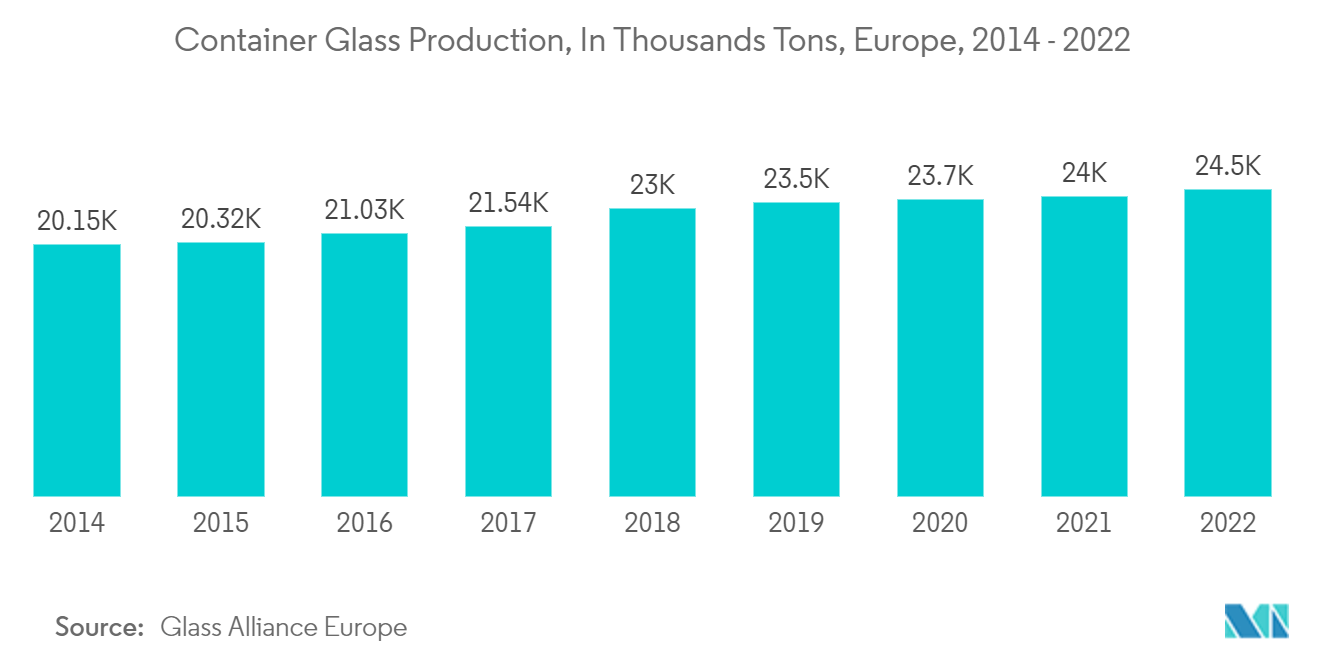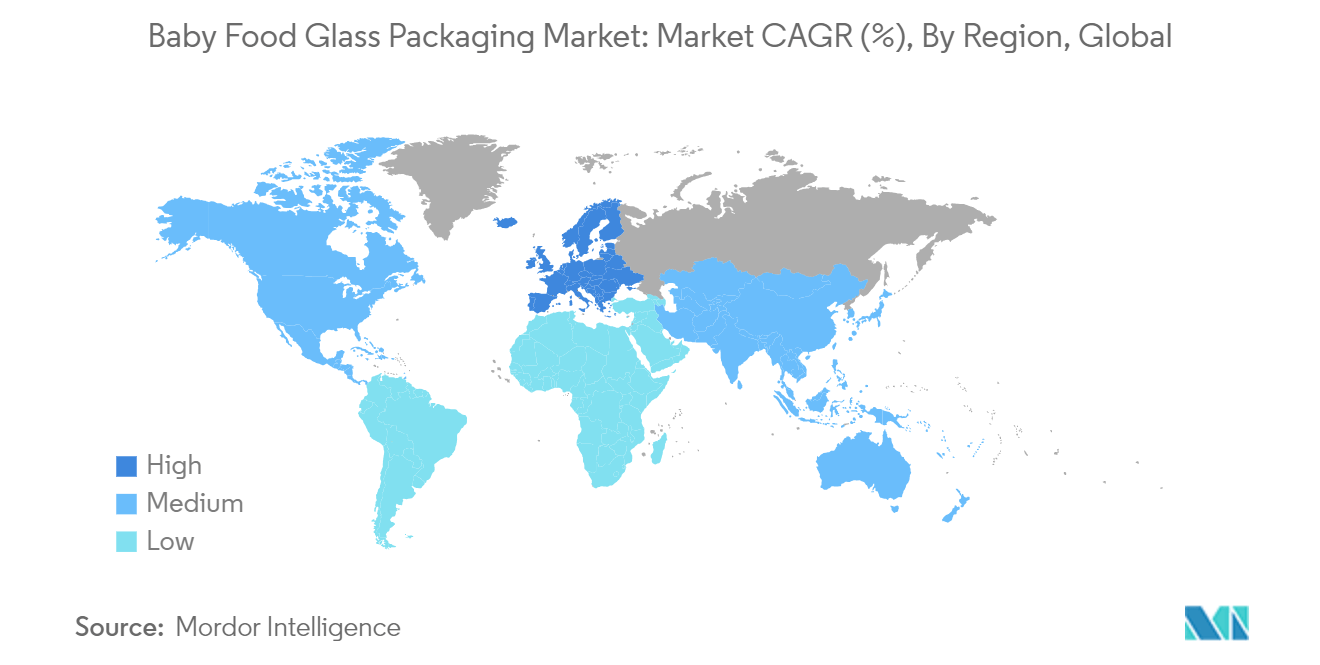Market Trends of Baby Food Glass Packaging Industry
Baby Food to be the Fastest Growing Application Segment
- Glass packaging with P/T seals proves highly effective for preserving pasteurized or sterilized baby food. This packaging ensures protection from microbial spoilage and oxidation, allowing it to remain unrefrigerated for extended periods while maintaining its valuable qualities.
- Moreover, glass packaging boasts minimal material migration to food and can be efficiently recycled alongside metal seals. Consequently, packaging waste poses no threat to the environment. According to scientists, bottle-fed infants are ingesting millions of microplastic particles daily. The recommended high-temperature procedure for sterilizing plastic bottles and preparing formula milk was found to cause the shedding of millions of microplastics and trillions of even smaller nanoplastics.
- The push for sustainable packaging is a significant trend across industries. Glass is a highly sustainable material as it is 100% recyclable and can be reused. This appeals to eco-conscious parents who seek eco-friendly options for their baby's food, as most parents are conscious of the safety and health of their infants. Glass containers are considered a safe and non-toxic option for storing baby food, as they do not leach harmful chemicals into the food, ensuring the purity of the contents.
- Glass containers allow consumers to see the product inside, reassuring them about the quality and freshness of the baby food. This transparency is a key selling point, particularly for organic and natural baby food products. Advanced packaging technologies, such as vacuum-sealing and airtight lids, are being used to extend the shelf life of baby food in glass containers. This ensures longer product freshness without the need for preservatives.

Europe to Register Significant Growth
- The demand for convenience, variety, and more nutritional baby food is a factor driving the increasing consumption of baby food. The growth of the middle class and the rising working female population are also factors boosting the market. Consumers are more conscious of their baby's health, which increases demand for natural, vegan, and organic baby food. In response to the growing demand for organic and vegan baby foods, manufacturers are developing new products to expand their market share. The demand for a variety of baby food products, including organic and vegan options, necessitates different types of packaging to cater for these products. Manufacturers may require specialized packaging solutions to maintain the quality and safety of these products. This drives the need for innovation in baby food packaging.
- In Germany, the combination of consumer preferences for healthier baby food options, the innovative approach of glass manufacturers, and a growing focus on sustainability within the industry is set to fuel the continued expansion of the baby food glass packaging market.
- The increase in glass bottle imports from the United Kingdom indicates a growing demand for glass containers. This increase in supply can benefit the baby food glass packaging market because it suggests that there may be more available glass packaging options, potentially leading to greater competition among glass bottle manufacturers. This competition can lead to better pricing and quality for businesses in the baby food packaging industry.
- In France, a significant breakthrough has been observed in the baby food market in recent years, with small-scale manufacturers gaining prominence. According to the financial newspaper Les Echos, local entrepreneurs are disrupting the industry and meeting the growing demand for organic and homemade products. Organic and homemade baby food products often command premium prices. Consumers who invest in these healthier options are more likely to prefer premium packaging options like glass. Glass containers are often associated with quality and safety, making them an attractive choice for products targeting health-conscious parents.Spanish consumers are increasingly demanding that their children be provided with organic foods. Hence, the baby food market has also taken off with the growing trend of consumer consumption of organic products. Consumer strict government regulation of the manufacture of infant foods has led to slower growth in the market. It benefits consumers, as these regulations ensure food safety and quality products are used. Strict government regulations for baby food production ensure that food safety is maintained and high-quality products are used. Glass containers are considered a safe and non-toxic packaging option. Strict quality and safety standards enforced by government regulations make glass packaging suitable for use as they help maintain the integrity and quality of baby food products.
- The baby food glass packaging market in the Rest of Europe is witnessing a significant focus on sustainability. Companies like Ardagh Glass Packaging are investing in innovative solutions to reduce emissions and minimize resource usage. This is crucial in the context of the baby food industry, as parents are increasingly looking for eco-friendly and sustainable packaging options for their children's food.

